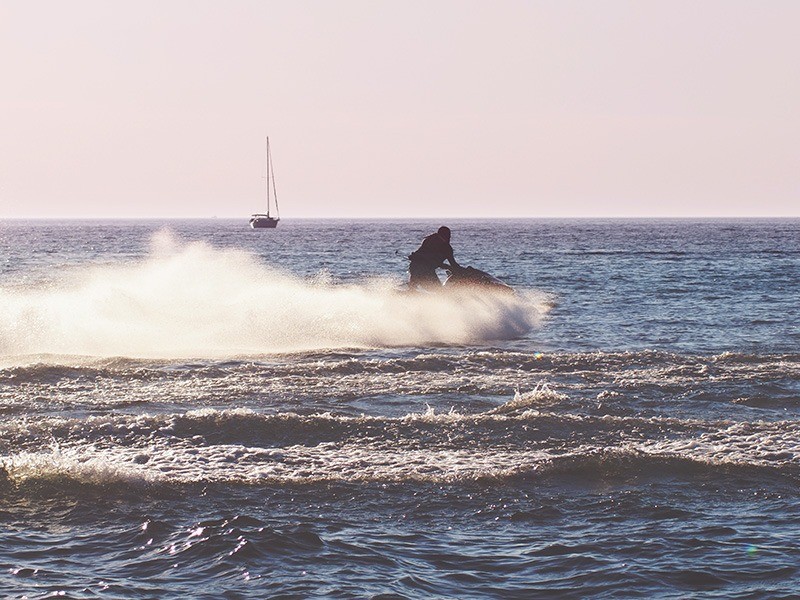
Riding a Sea-Doo is an inherently fun activity. If you want to get the most from the experience, performance matters. How do you maximize your craft's performance, though? Follow these six tips and tricks to have the most fun with your Sea-Doo.
Impeller
Rather than relying on a propeller to provide forward thrust, a personal watercraft employs an impeller. If you've ever heard anyone call Sea-Doo or a PWC a "jet ski," then you might recognize the impeller as the part that produces the jet of water behind the vehicle.
The main advantage of an upgraded impeller is acceleration. A better impeller will yield more responsive acceleration. In turn, handling improves because you can speed up or slow down the craft more quickly.
Notably, you should understand how the impeller matches your goals. Some impellers provide top speed at the expense of reduced fuel economy, for example. If you want to spend the day out on the water without refueling, then you'll want the impeller to be as efficient as possible. Conversely, if you want to take big jumps in rough waves, you need that extra power to launch the craft.
Impeller maintenance is also important. Damaged blades can curb performance. Even something as simple as seaweed in the system will also reduce the available power and fuel economy.
Ride Plate
The ride plate protects your vehicle's main systems like the pump and the impeller. It sits on the bottom of the craft and toward the back.
Your ride plate's angle will also significantly affect your vehicle's performance. A stock Sea-Doo usually employs a neutral angle because the manufacturer wants to provide the best general experience. Angling the ride plate downward, sometimes called a negative angle, provides tighter cornering and handling. Positive or upward angles are better for stability, especially in choppy waters and while riding at high speeds in straight lines.
Versatile plates also exist. These are adjustable models. If you're going to regularly change the Sea-Doo's disposition, you may want to invest in a versatile plate so you can quickly change the vehicle's attitude to suit conditions and activities.
Engine Control Unit
The ECU is a programmable module that significantly affects power and fuel consumption. Once more, the stock model uses a configuration that maximizes general enjoyment. Reprogramming the ECU offers you the chance to trade efficiency for power or vice versa.
Notably, you should ask a professional to fiddle with the ECU. A misconfigured ECU can yield bad fuel economy and reduced power.
Intakes and Exhausts
Like all systems with internal combustion engines, jet skis need air intakes to enrich the fuel mixture. The main advantage of an intake upgrade is improved cooling. Cooler air yields a cooler mixture that allows the fuel to burn more efficiently.
Also, you should check and clean the intake before every trip. Look at the air filter, too. If the craft starts to feel sluggish during a ride, consider stopping and inspecting the intake.
The exhaust system is where performance potential exists. An exhaust regulates the engine's back pressure. An aftermarket model may provide more back pressure. In turn, that might yield more power. You also could purchase an aftermarket silencer to reduce the craft's noise level.
Be aware that local regulations may prohibit certain exhaust configurations. Know the noise ordinances for wherever you plan to ride.
Check the exhaust's condition before each trip. If the Sea-Doo starts to feel sluggish during a ride, the exhaust is another potential culprit.
Fuel
Check the manual to verify what the recommended fuel type for the craft is. A typical Sea-Doo uses regular unleaded gasoline. However, you should confirm what the recommended octane rating is. People often make the mistake of using higher-octane fuel because they believe it's somehow better. Use the rating that's right for your vehicle rather than needlessly going up a grade.
With the rise of ethanol additives in gasoline, you also want to be wary of just pumping from any station. Whenever possible, try to use ethanol-free gasoline to reduce engine wear.
Also, drain the vehicle's tank if you don't plan to use it for a while. Skunky fuel can lead to sluggish performance.
Monitoring the Gauges
Keep an eye on your craft's gauges during every ride. The engine temperature gauge, for example, can tell you whether the vehicle is running too hot. A hot engine generally operates with less efficiency and lower performance. In extreme cases, overheating can cause spontaneous ignitions that will make the engine sound like it belongs in an old farm tractor.
Watch the tachometer closely, especially when you're first getting to know a particular model of Sea-Doo. If rider sees the RPM needle spike quickly when they hit the throttle, they may need to operate it more gently. Otherwise, the ride will be jerky. Also, they'll unnecessarily burn more fuel at a faster rate.
Watch the engine warning lights, too. If the oil level gets low, you'll want to bring the jet ski in for maintenance as soon as possible. Back off the throttle and try to coast as much as possible. If a friend can provide a tow, that's better for the engine.
Some models have eco mode. This is a fuel economy setting that reduces performance. If you're not getting enough power, this is one of the first things you should check.
Conclusion
With a little attention and planning, you can significantly improve the performance of your Sea-Doo. Develop a checklist so you can check for issues during every ride and at the start of the season. Regular maintenance and targeted upgrades can help you maximize the experience.